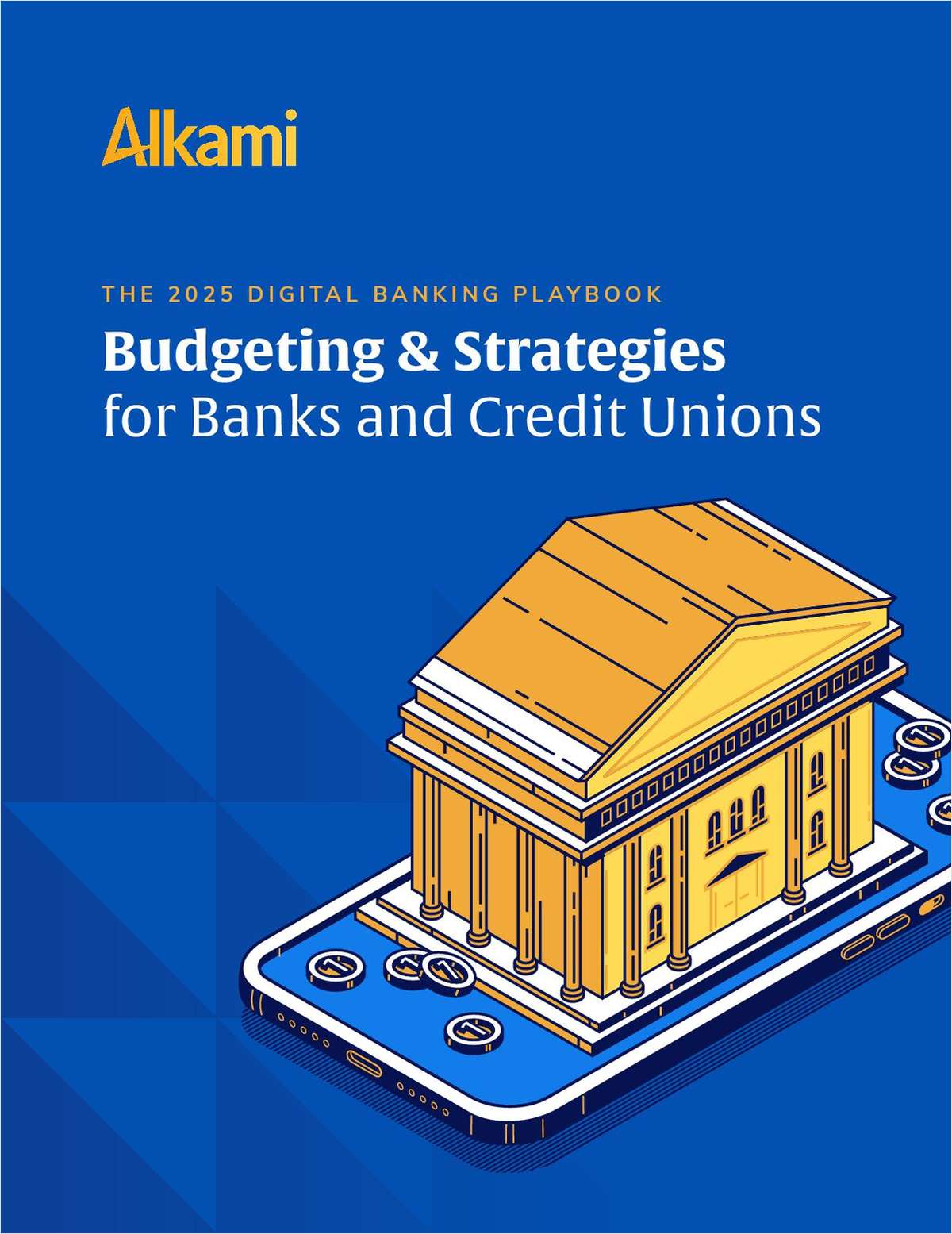ARLINGTON, Va. – Many community development credit unions, among the founding institutions of the nascent financial development industry and veterans of working in underserved and low income areas, may be on the edge of withdrawing from the largest formal structure of the industry they helped found. “This year may be a make or break year for many CDCUs and the CDFI Fund,” said Clifford Rosenthal, executive director of the National Federation of Community Development Credit Unions and the chairman of the CDFI coalition, the closest thing the young industry has to a trade association. They will watch to see how the Fund handles applications as well as several other issues and decide whether or not it's still worthwhile for them to remain recognized CDFIs, Rosenthal explained. While it's no great secret that the relationships between CDCUs and the CDFI Fund have been choppy over the last 24 months, relatively few understand how far back the relationship between the young CDFI industry and CDCUs goes. Speaking to the 2004 National CDFI Institute, held in Washington on February 5, Rosenthal reminded the attendees that as little as a decade ago, the CDFI industry did not even have a name. In 1994, financial activists that specialized in working with lower income communities and in community development met at a church on Wall Street to discuss how to bring some organization and greater recognition to their industry, Rosenthal related. At the time the group didn't even have a name and it took an editorial on the Wall Street Journal to convey upon the industry a more marketable name. These institutions, including CDCUs, became recognized as Community Development Financial Institutions, and the march to gradually organize went forward. This increased organization, combined with support form the Clinton Administration and in particular then Treasury Secretary Robert Rubin, led to the creation and funding of the Treasury Department's CDFI Fund. The CDFI Fund has directed $30 million to mostly smaller CDCUs since 1995. But ongoing budget concerns have led to a 66% reduction in the federal government's commitment to the Fund since the beginning of the Bush Administration and have led the CDFI industry to take a hard look at what it needs to do to increase its recognition. “Together our organizations created the CDFI brand, if you will,” Rosenthal noted when speaking to the meeting. “Unfortunately we are not at the point yet where you can drive off the interstate into a neighborhood or small town and ask someone `excuse me, can you direct me to the nearest CDFI.' Ask them for a bank and they will very likely be able to help you, though not in some of our communities. Ask them for a credit union and you have a pretty good shot. Ask them for a payday lender or a pawnbroker you have unfortunately an excellent chance of being directed to one fairly close by,” Rosenthal said. What the industry needs, Rosenthal explained, is greater brand recognition and the place where it needs to build that recognition first is among the lawmakers, policy makers and regulators in Washington D.C. Their awareness and support is critical because as federal government support for the CDFI Fund has been cut the Fund has underperformed and actually failed to grant money Congress allocated for grants, Rosenthal noted. Further, in the process of doing that it has turned its back on parts of the CDFI industry, including CDCUs, Rosenthal outlined. “When the Fund sets off on the wrong direction, we have not only the right but the obligation to engage it in a very vigorous debate and hopefully set it back in the direction,” Rosenthal said. Recent history has made CDCUs question the CDFI Fund's commitment to help them and, at the same time, a new scoring plan currently under development leaves it unclear as to whether the CDFI Fund understands the differences between CDCUs and the rest of the CDFI industry. The questions about the degree to which the CDFI Fund supports CDCUs has stemmed from two problems. In real terms the Fund has dropped its support sharply from previous years and had made the support it did offer very difficult for smaller institutions to get. The Small and Emerging CDFI Assistance component of the Fund's operations has been the Fund's mechanism for distributing the majority of the money it has granted CDCUs so far. In 2002, grants mostly made through the SECA component accounted for $2 million for individual CDCUs and an additional $2 million for the National Federation of Community Development Credit Unions which administers the money on behalf of CDCUs that are too small to interact with the Fund directly. But in fiscal year 2003, the Fund ended the SECA program in favor of an emphasis on a program called the New Markets Tax Credit program. Under NMTC, businesses which make grants to qualified community development financial institutions can receive tax credits from the federal government for those grants. The new program was meant to move CDFIs, including CDCUs, away from a focus on the federal government for support and more toward looking to the financial sector. The Federation pointed out that relatively few CDCUs had the size, staff or resources to really take advantage of the NMTC and warned that eliminating SECA would effectively eliminate many CDCUs. Sure enough, in 2003 the Fund made only four grants to CDCUs, totaling just over $1 million. The Federation received no money on behalf of CDCUs at all, even though it had applied for over $900,000. The Federation also pointed out that the Fund had made it very difficult for many small CDFIs, especially CDCUs, to apply for support by making all its applications and support channels electronic. This has been particularly hard for CDCUs who lack the technical know-how and resources to mount electronic applications and data. For its part the Fund has recognized this problem and CDFI Director Tony Brown (who has since resigned, see sidebar) told the Institute meeting that the Fund intended to reinstate the SECA program and to make the application process easier for smaller institutions like CDCUs. Rosenthal said CDCUs will be glad to hear it but will still want to see how the promises translate into actions in the coming months. The second problem CDCUs may have with the Fund may not be resolved so easily. Because a significant number of legislators have complained that CDFIs have not been careful enough about how they have spent the taxpayer's money that has been entrusted to them, the CDFI Fund has been working to develop a scoring system that it will be able to use to measure CDFI impact. Nicknamed PLUM for Performance, Leverage, Underwriting and Management, the scoring system seeks to set up a measuring standard that the Fund can use to help evaluate and represent CDFIs to the Administration and Congress. Potential problems have arisen as the CDFI Fund has tried to apply PLUM, which is still under development, to CDCUs. The Federation argues that PLUM resembles the CAMEL ratings that CDCUs already receive, but falls short of CAMEL by drawing on a very limited number of ratios compared to CAMEL. PLUM would also not be independent, the Federation complains. It also points out that PLUM numbers do not take into account some of CDCUs' specific characteristics. At an Institute breakout session devoted to explaining PLUM, Rosenthal expressed some of CDCU's criticisms of the proposed standard. “Does a net worth of 12% mean that an institution is doing great or that it is risk averse?” Rosenthal asked. “Does it mean that it under serves its community? If a CDCU has high operating costs, is that because it is inefficient or does it have to pay a higher than expected rent due to lack of suitable space?” Rosenthal was particularly critical of the proposed PLUM when it came to assessing a CDCU's impact. “We have members who have been open and serving their communities for 30 or 40 years,” Rosenthal said. “They are serving now the children of their first members whom they helped lift out of poverty. There needs to be some room in the standard for a longitudinal dimension,” he said. He also noted that the CDCUs have specific measures that the current proposed PLUM doesn't recognize. Membership growth, diversification of products, growth in savings and the cost to the community if the institution was not there, all need to be looked at if a standard is going to be applied to CDCUs, Rosenthal argued. He believes that CDCUs and all CDFIs need to be looked at on a more case-by-case basis and without a reliance on a strictly numbers and ratio approach. But the problem is that such an approach that used things like site visits and interviews would be considerably more expensive for an agency which is already desperate to cut costs. The question of PLUM or another standard is really key for CDCUs, Rosenthal explained, because when the Fund has used only numbers and ratios in the past to evaluate credit union performance, credit unions have come up wanting. “Using solely the standards that the Fund used to evaluate last year's applications,” Rosenthal explained, “not only would 94% of CDCUs have failed, 90% of all low-income credit unions in the U.S. would have failed and 90% of all credit unions in the U.S. would have failed. Now, these institutions which serve tens of millions of Americans are clearly not failing so someone needs to reevaluate how this system will look at CDCUs.” In many ways, Rosenthal explained, this year may be the key for a lot of credit unions. It's not easy to get to be recognized as a CDFI, even if they are doing the work of one, and credit unions will look to the CDFI Fund's performance to decide if it's still worth it to be a CDDCI. -
Complete your profile to continue reading and get FREE access to CUTimes.com, part of your ALM digital membership.
Your access to unlimited CUTimes.com content isn’t changing.
Once you are an ALM digital member, you’ll receive:
- Breaking credit union news and analysis, on-site and via our newsletters and custom alerts
- Weekly Shared Accounts podcast featuring exclusive interviews with industry leaders
- Educational webcasts, white papers, and ebooks from industry thought leaders
- Critical coverage of the commercial real estate and financial advisory markets on our other ALM sites, GlobeSt.com and ThinkAdvisor.com
Already have an account? Sign In Now
© 2025 ALM Global, LLC, All Rights Reserved. Request academic re-use from www.copyright.com. All other uses, submit a request to [email protected]. For more information visit Asset & Logo Licensing.









